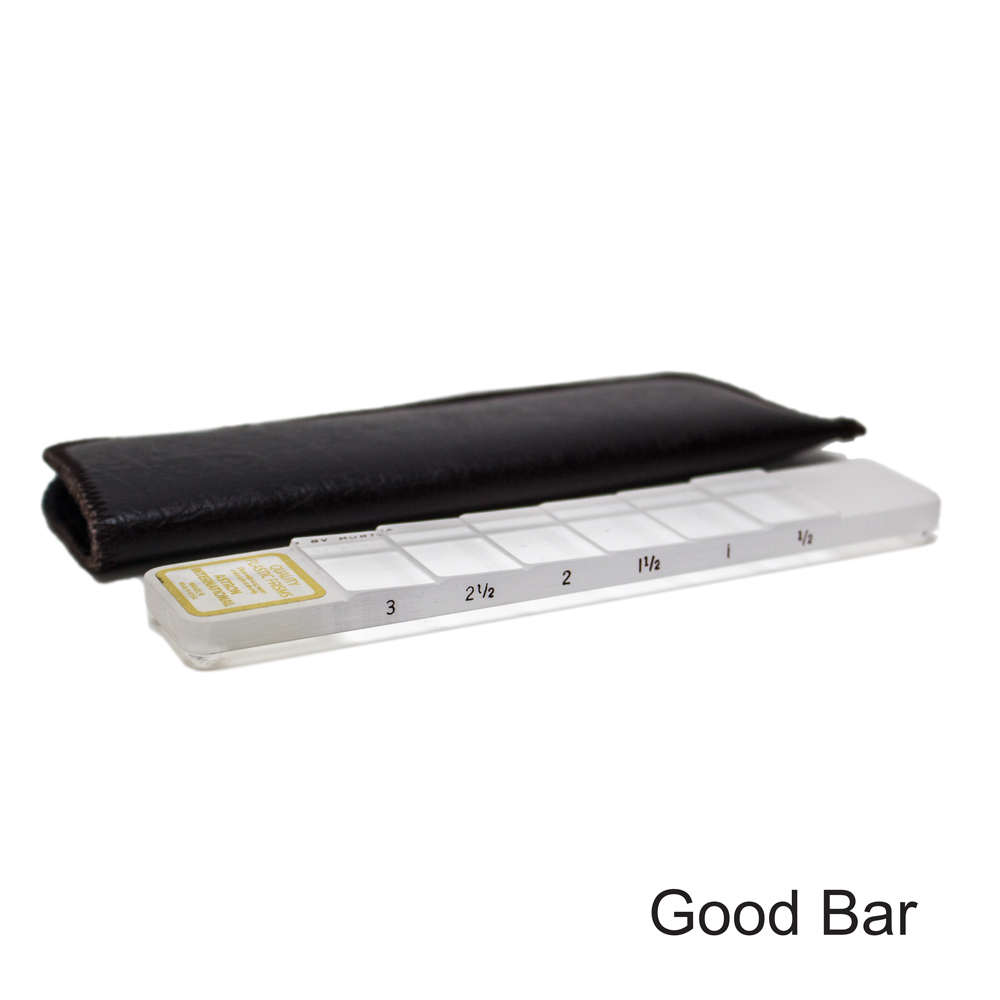Sizes: sizes = 1-2-4-6-8-10-12-14-16-18-20-25-30- 35-40-45Δ
Prism bars provide a range of prism corrections in one convenient, easy to use instrument as opposed to using separate prisms. In this regard, they save time during the examination, beneficial to both examiner and patient. They are used in several different applications during vision exams. This includes measuring phoria deviation when testing or measuring ocular alignment. Measurements are also used for calculating the amount of correction needed in strabismus surgery and for monitoring changes in ocular alignment with recovery from muscle imbalance.
The new EZ View Prism Bar eliminates a problem that exists with other prism bars: the numerical magnitude of the prism has typically been located on the thick edge of the prism bar. This created a problem for the examiner. When using the prism bar to measure either the angle of deviation or to measure convergence and divergence amplitudes, the examiner had to either turn the prism bar sideways to view the numerical magnitude or make a pronounced movement to the side to view the prism magnitude. When moving the position of prism magnitude with EZ View the examiner can now see the numbers without the need to either turn the prism bar or change viewing position. The issue of turning the prism bar sideways during the assessment of vergence amplitudes could interfere with the accuracy of the measurement. These issues can be particularly problematic for less experienced examiners; EZ View's design allows clinicians to concentrate on the important aspects of the examination procedures and easily view the results.
Prism bars provide a range of prism corrections in one convenient, easy to use instrument as opposed to using separate prisms. In this regard, they save time during the examination, beneficial to both examiner and patient. They are used in several different applications during vision exams. This includes measuring phoria deviation when testing or measuring ocular alignment. Measurements are also used for calculating the amount of correction needed in strabismus surgery and for monitoring changes in ocular alignment with recovery from muscle imbalance.
The new EZ View Prism Bar eliminates a problem that exists with other prism bars: the numerical magnitude of the prism has typically been located on the thick edge of the prism bar. This created a problem for the examiner. When using the prism bar to measure either the angle of deviation or to measure convergence and divergence amplitudes, the examiner had to either turn the prism bar sideways to view the numerical magnitude or make a pronounced movement to the side to view the prism magnitude. When moving the position of prism magnitude with EZ View the examiner can now see the numbers without the need to either turn the prism bar or change viewing position. The issue of turning the prism bar sideways during the assessment of vergence amplitudes could interfere with the accuracy of the measurement. These issues can be particularly problematic for less experienced examiners; EZ View's design allows clinicians to concentrate on the important aspects of the examination procedures and easily view the results.













